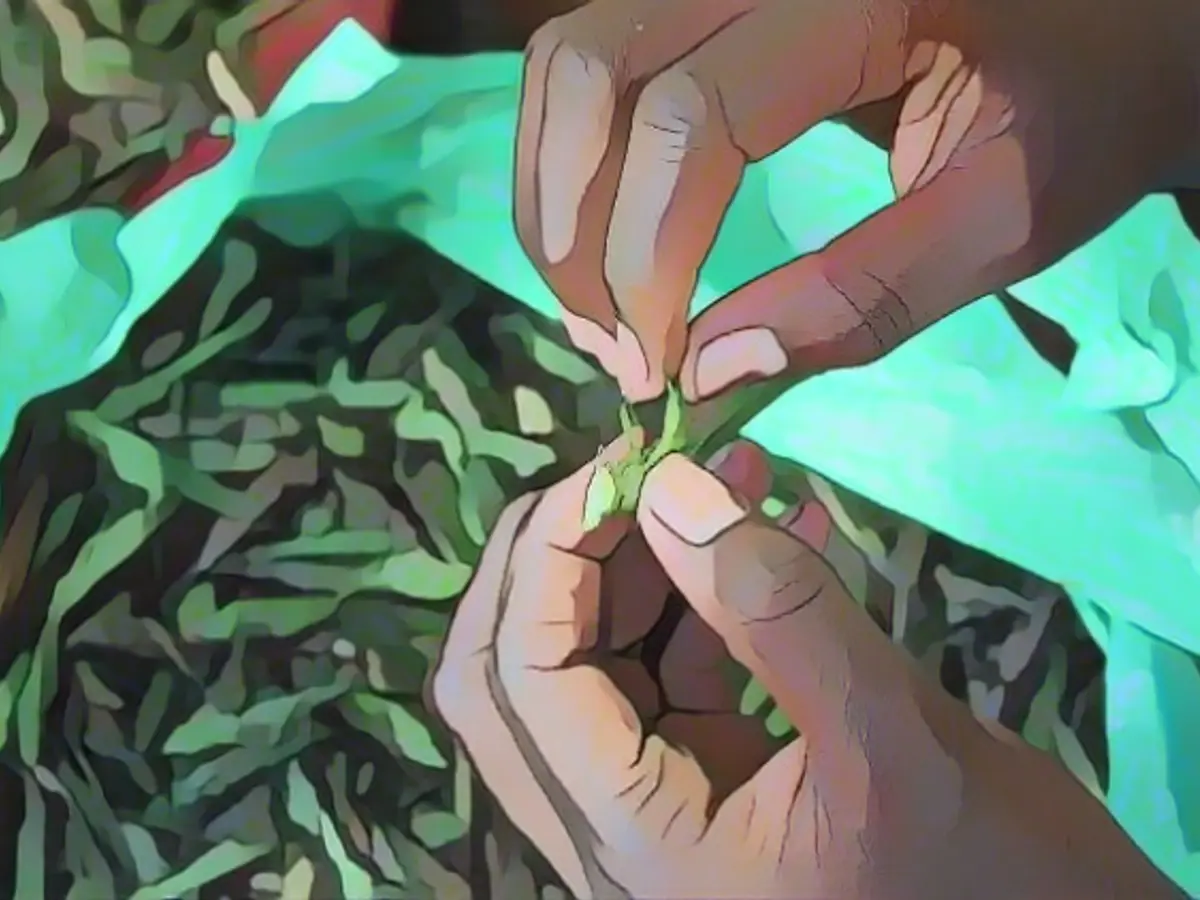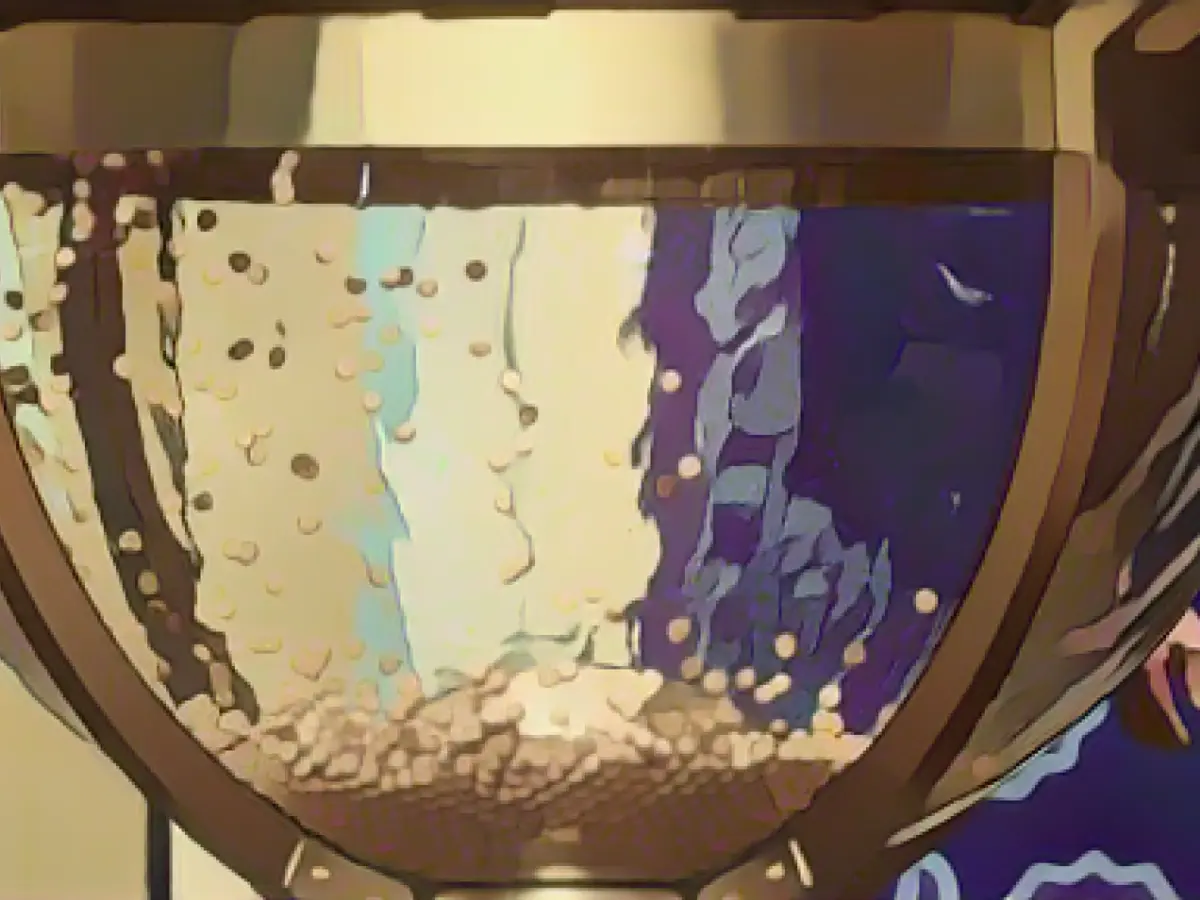Ugandan Locust Snackers Fret Over Paucity of Protein-packed Pests
Ah, the bountiful swarms of locusts that plague the skies of Uganda every Advent. Plucked from the sky and deep-fried with onions, these little critters make for a delightful, protein-rich snack during Christmas season.
Juliet Nakato lights a match and tosses in damp wood and mango leaves. "I need to produce lots of smoke," she says, coughing, and aims for a smoky haze that stuns the grasshoppers so they can't fly away.

Sweat trickles down Juliet's brow as she braces herself amidst the nearly vertical corrugated iron sheets in a field just outside Kampala. The first stars twinkle in the sky, and Juliet gazes upwards with a worried expression. "It won't be a prosperous season, only a few are flying," she says, with a heavy heart. "We rely on the income for my school fees."
Grasshoppers Transform from Plague to Prized Protein
What was once a biblical plague is now an economic boon for Ugandan farmers. With the advent of Advent, an entire industry thrives on the locusts known as nsenene. Farmers across the country set up corrugated metal traps to ensnare the flying hoppers.

To catch the elusive feasters, diesel generators are hauled into marshlands, and bright spotlights are set up to draw in the nocturnal swarms. Reflective corrugated iron sheets funnel the locusts downward, and nets are deployed to collect the insects that ultimately slide into barrels, where they are stunned by smoke. Once filled, the barrel is emptied, and the fiddly fingers of local women pluck the wings off and wash the insects before deep-frying them into crispy, crunchy treats.
President Museveni Wonders Where the Grasshoppers Have Gone
Restaurants and sports bars throughout Uganda advertise their nsenene menus during the festive season. On the roadside, vendors fill plastic bags with grasshoppers and sell them to passing drivers. And it's not just dinner parties during Christmas that call for nsenene - it's a year-round favorite.
However, speculation runs wild as the grasshopper traps remain empty in this year's season. Uganda's President Yoweri Museveni commented on Twitter: "It's Museneene (the month of locusts). But where are they? Is it climate change?" He added, "I don't eat Nsenene. However, I wish the Nsenene eaters the best of luck."
Researchers Investigate Causes of Grasshopper Population Decline
Science has now been puzzled by the absence of grasshoppers, prompting researchers to investigate why this year's harvest is so meager. One prominent entomologist, Philip Nyeko, identified the need for a positive shift in the country's environmental attitude as a major cause of the decline. Most grasshoppers breed in the swamps along the Nile or around Lake Victoria. However, these important breeding grounds have been gradually destroyed, much to the concern of Nyeko and his fellow researchers.
"If you don't protect these breeding grounds, our edible insects will disappear forever," warns Nyeko. Another researcher, Javira Beturumura, cites the El Niño weather condition as a common trend leading to heavy rainfall in the region, which is unfavorable for grasshopper larvae hatching.
As the sun sets and Juliet's fire smolders, she switches on the generator, and the light bulbs flicker antagonistically in the gloom. Burns cover her skin, and her eyes water from the intense glare. "They're here, just a few," she sighs, hope dispelling like the smoke in her hands. "We pray for the big swarms before Christmas so that my mother can sell them," she says. "Otherwise, we can't pay my school fees in January."







